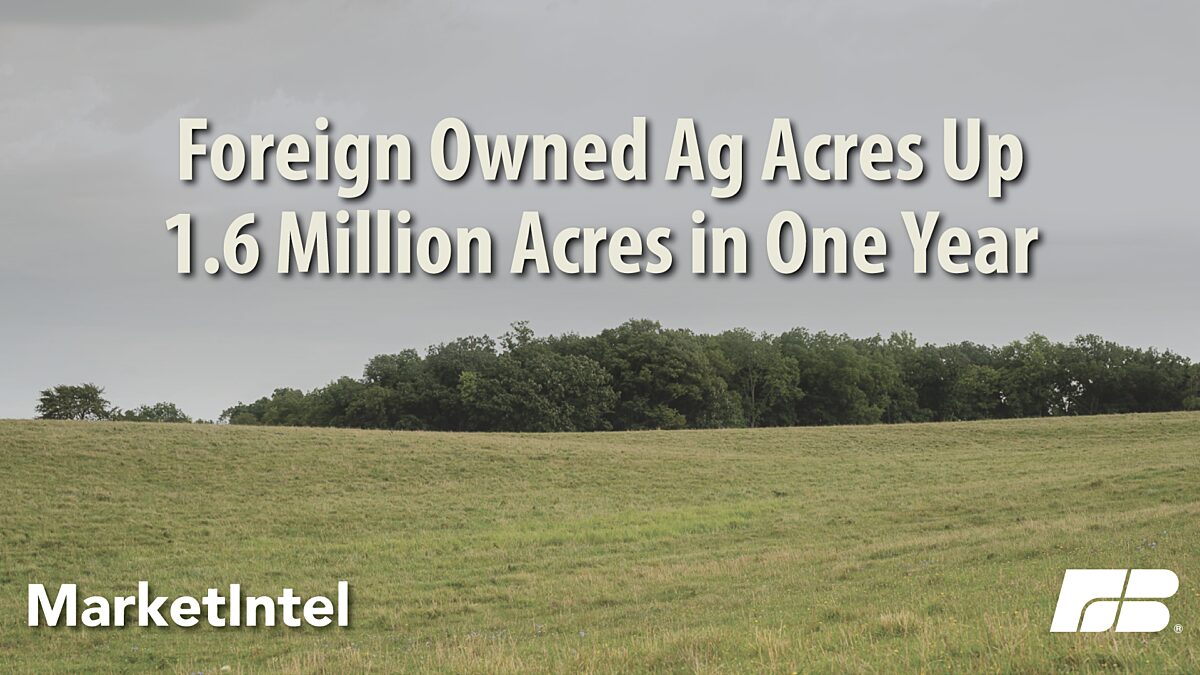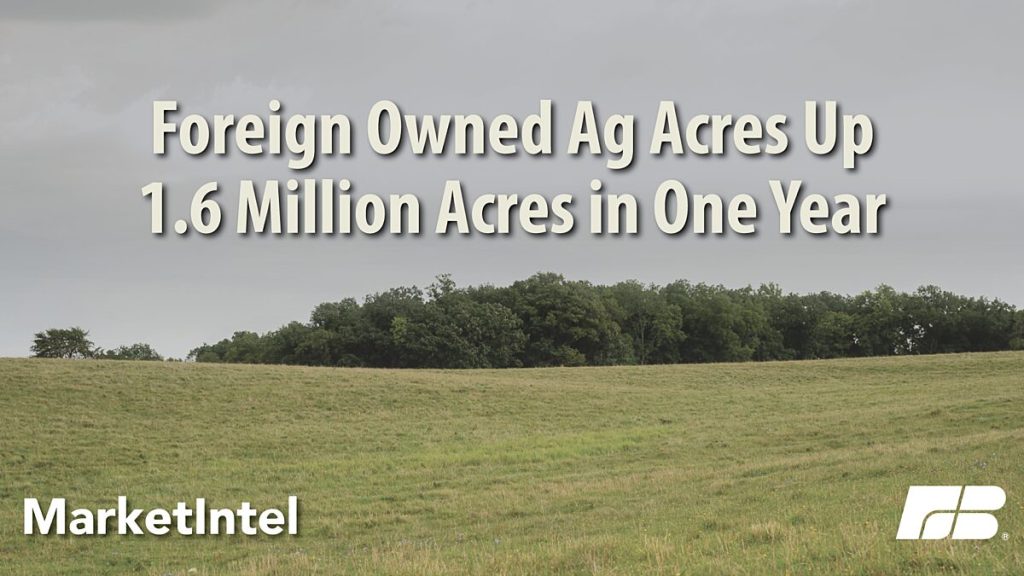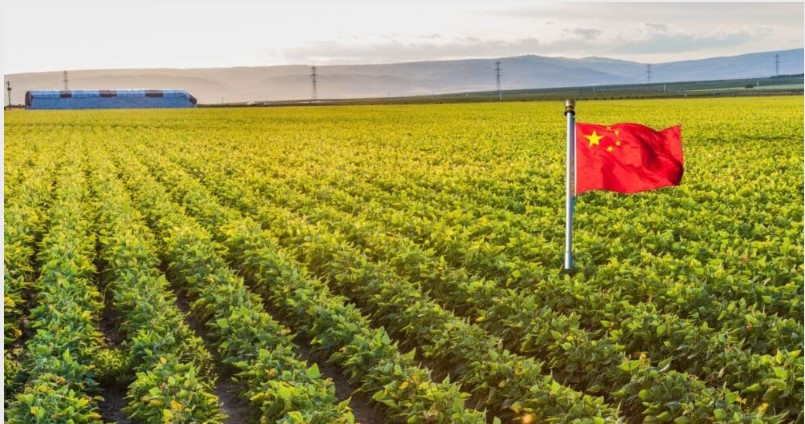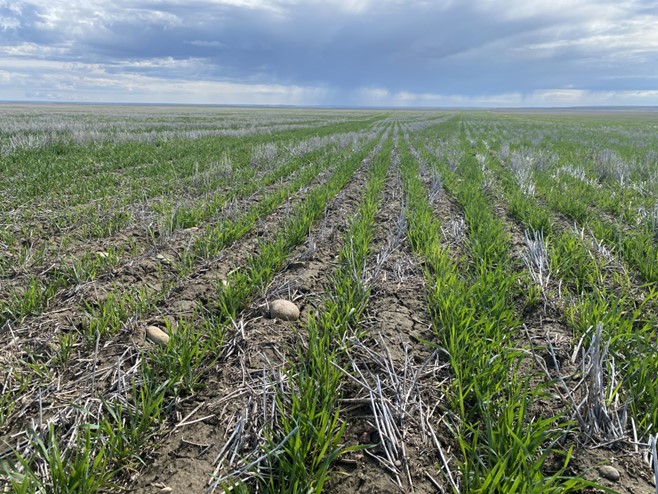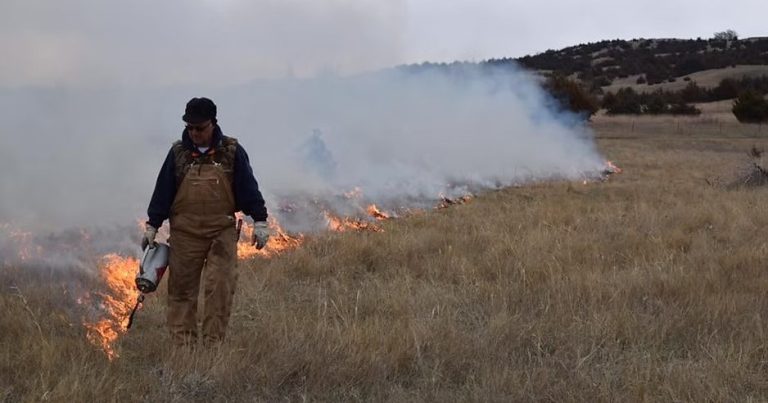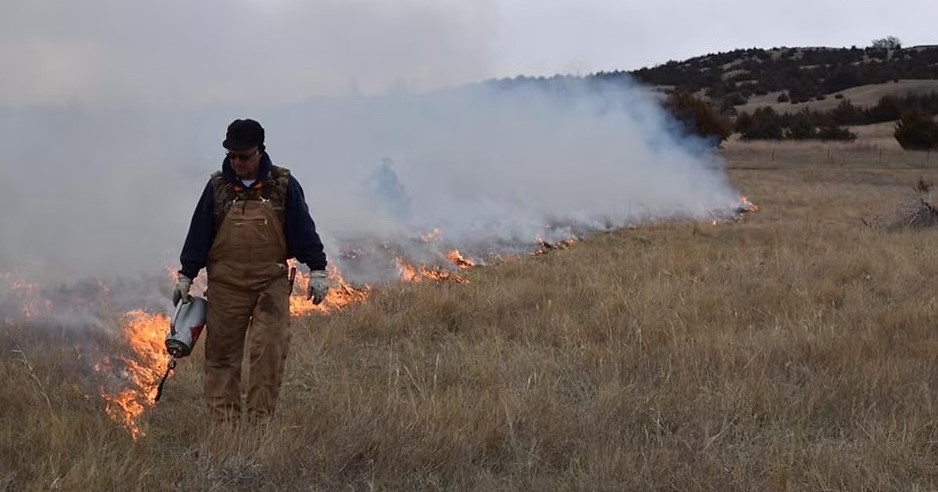WASHINGTON, D.C. – Foreign ownership of agricultural land in the United States increased by 1.58 million acres from 2022 to 2023, driven primarily by the expansion of renewable energy projects across the country. According to a new analysis from the American Farm Bureau Federation’s Daniel Munch, 45.58 million acres of U.S. agricultural land (or 3.61% of total privately held agricultural land) is now held by foreign investors.
The most talked about foreign investors in recent years — those from China — saw their share of ownership of U.S. agricultural land decrease from 2022 to 2023, falling by 34,000 acres (an 11% decrease) to 277,336 acres of agricultural land owned.
“There has been significant interest in U.S. agricultural land owned by Chinese investors,” Munch wrote. “In 2023, 277,336 acres were linked to Chinese investors — 0.02% of all privately held U.S. agricultural land. This marks a 106,599-acre (27%) decline from the 2021 peak of 383,935 acres.”
:max_bytes(150000):strip_icc():format(webp)/ForeignOwnership_2025_Fig1-3ce4eeb7dac24bcd9e5fbafde540d5cb.png)
Munch wrote that Canadian investors “own the largest portion of foreign-held U.S. agricultural land with 33.5% (15.35 million acres) of the total and 1.21% of all U.S. agricultural land. Following Canada, investors from the Netherlands, Italy, the United Kingdom and Germany own 0.41% (5.2 million acres), 0.22% (2.7 million acres), 0.11% (2.6 million acres) and 0.20% (2.5 million acres) of U.S. agricultural land, respectively.”
Of the 45.58 million acres of foreign owned agricultural land, Munch wrote that 21.9 million acres were forestland, 13.2 million acres were cropland and 7.7 million acres were pastureland. “Over the past five years (between 2018 and 2023), foreign investments in U.S. agricultural land have seen growth across all categories: a 101% increase in cropland, 28% in forestland, 15% in pastureland and 38% in other agricultural land,” Munch wrote. “This reveals heightened interest by foreign investors in cropland as opposed to other land categories.”
Renewable Energy Drives Increase
Progressive Farmer’s Todd Neeley reported Tuesday that “AFBF took a closer look at what federal data shows about investments in ag land for renewable energy development, focusing particularly on long-term leases of 10 years or more.”
“‘Since 2010, foreign renewable energy investments in U.S. agricultural land have increased by at least 10.4 million acres — a 353% rise — accounting for nearly half of the 21-million-acre total increase in foreign-owned ag land during this period,’ the AFBF said,” according to Neeley’s reporting. “From 2018 to 2023, AFBF said the trend ‘intensified’ with renewable energy entities including those developing solar and wind energy ‘driving 76% of the total growth in foreign-owned agricultural land.’”
“Of the land used for renewable energy in 2023, AFBF said it found that 70% of the acreage was cropland, 22% classified as pastureland, 6% as other agricultural land and the remaining 2% as forestland,” Neeley reported. “Based on a keyword search of federal data, 84% of acres were associated with entities linked to wind energy, AFBF said.”
Texas Leads U.S. States With Most Foreign Held Ag Land
In the analysis, Munch wrote that “by state, Texas has the largest quantity of foreign-held U.S. agricultural land at 5.7 million acres making up 3.6% of the state’s 158 million acres of privately held agricultural land.”
“Maine has the second-largest quantity of foreign-held U.S. agricultural land at 3.5 million acres but leads for highest proportion of foreign-held ag acreage with over 21% of the state’s 16.5 million acres of ag land being held by foreign investors,” Munch wrote. “In both Texas and Maine, foreign ownership is primarily driven by forest products and timber companies. Hawai’i also has a significant share of foreign-owned agricultural land, with 17% (283,000 of its 1.6 million agricultural acres) largely tied to renewable energy investments.”
From 2022 to 2023, 42 “states saw increases in foreign-owned ag land, led by New Mexico (+358,149 acres), Texas (+223,165 acres), Arkansas (+182,955 acres), Oregon (+167,108 acres) and South Carolina (+84,708 acres),” Munch wrote. “Growth in New Mexico and Texas is primarily tied to new or expanded wind energy investments, while increases in Arkansas, Oregon and South Carolina are largely linked to timber industry expansions. Hawai’i experienced the largest year-over-year percentage increase, with a 33% jump in foreign-held land, driven by wind energy projects.”
“Meanwhile, three states — Alaska, Connecticut and Rhode Island — along with Puerto Rico, had no change in foreign-owned acreage,” Munch reported. “Five states — Alabama, Michigan, Indiana, Montana and Iowa — experienced declines, with Alabama recording the largest numerical decrease (-158,068 acres) and percentage drop (-7%), primarily due to reduced holdings by foreign timber companies.“
In South Dakota, a law was passed by the legislature in 2024 that placed restrictions on foreign ownership of agricultural land. It states a foreign entity, foreign government, or foreign person from China, Cuba, Iran, North Korea, Russia, or Venezuela) may not own agricultural land in South Dakota.
